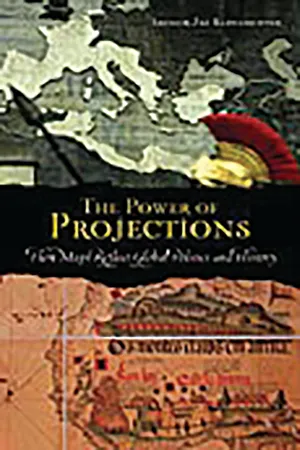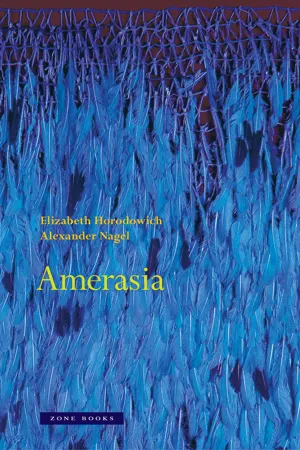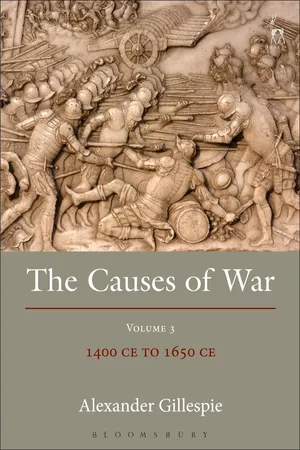History
The New World
"The New World" refers to the Americas, which were discovered by European explorers in the late 15th and early 16th centuries. This discovery led to the colonization of the region by European powers, resulting in significant cultural exchange, the spread of diseases, and the exploitation of indigenous populations. The encounter between the Old World and the New World had profound and lasting effects on global history.
Written by Perlego with AI-assistance
Related key terms
1 of 5
5 Key excerpts on "The New World"
- eBook - PDF
The Power of Projections
How Maps Reflect Global Politics and History
- Arthur Jay Klinghoffer(Author)
- 2006(Publication Date)
- Praeger(Publisher)
Intellectual historian Loren Baritz effectively sums up the conceptual impact of the “discov- ery” of America this way: “For those like Columbus, to whom the east was a place while the west was a mere direction, The New World could not assume independent importance. For this mentality, long active, The New World was an obstacle to westward progress toward the east. The search for a southwest or northwest passage occupied men’s attention for over four hundred years.” 2 The quest for these anticipated passages lured European explorers to and fro across the seas as nothing less than the Orient’s riches were the expected reward. LINKAGE? Juan de la Cosa, who had served as a pilot on Columbus’ second voy- age, produced a map in 1500 that did not place Cuba and other places they had visited on the East Asian mainland. Such questioning of the geographical context of Columbus’ expeditions was common in Europe at a time when there was growing acceptance that, in reality, a New World lay to the west. It was distinct from East Asia, but this did not necessar- ily mean that it was not connected to the Asian continent. De la Cosa depicted the northern and southern regions of The New World (later to be known as North and South America) as attached, but he did not try to delineate the western portion of North America. Whether or not it extended to Asia was left unclear. 3 Notwithstanding, The New World was quickly recognized as a conti- nent in its own right. The Florentine navigator Amerigo Vespucci, sailing on behalf of Spain, made numerous journeys to The New World during the years 1497–1507 and was convinced that it was not Asia but rather “the fourth part of the earth.” He referred to it as “Mundus Novus,” but this did not negate the possibility that it was geographically linked to Asia just as Europe was. Venetian cartographer Giovanni Contarini on his 1506 world map, and German geographer Martin Waldseemuller on his 1507 map, treated The New World as a separate continent. - eBook - ePub
- Elizabeth Horodowich, Alexander Nagel(Authors)
- 2023(Publication Date)
- Zone Books(Publisher)
17Reviewing the early modern travel-writing genre, the historian Joan-Pau Rubiés observed that the idea of The New World “included most of Asia, no less than America, given that much of the East had been equally ‘newly found’ by European navigators.”18 In his world map of 1538, Gerardus Mercator first placed the word America on what are today North and South America, yet the older understanding of new worlds persisted in maps, cosmographies, and histories even into the seventeenth century; indeed, in Mercator’s own even more influential 1569 map the term America disappears from the new landmasses, replaced by India Nova (see chapters 11 and 12 ).19 In his 1604 account of the Portuguese voyages around the coast of Africa to the Malabar Coast of India and on to Malacca, China, and Japan, the Italian Jesuit Giovanni Pietro Maffei uses the term new world to refer to India.20 Similarly, the Venetian Doge Leonardo Donà (1536–1612) catalogued accounts of both American and Asian travels under the title Del Mondo Nuovo.21 In his Discours de la nature et des parties du monde (1587), the French poet and philosopher Pontus de Tyard explicitly defines the “new world” as any and all lands unknown to the ancients. With some originality, he gives the lands ranging from Labrador above the arctic circle through New France (Canada), Florida, New Castile (Mexico), Panama, Brazil, and Peru down to the strait of Magellan the label “new Asia” (la nouvelle Asie), which extends across the South Sea to the China Sea, where the “old Asia” begins.22 The automatic identification of the term new world - eBook - PDF
The Causes of War
Volume III: 1400 CE to 1650 CE
- Alexander Gillespie(Author)
- 2017(Publication Date)
- Hart Publishing(Publisher)
X The New World 1. I NTRODUCTION T HIS CHAPTER IS about The New World, as established in the northern, cen-tral and southern parts of the Americas. The causes of warfare in the central and southern regions of this area were founded on the fact that as had occurred with some parts of Africa in the second half of the fifteenth century, lands already occupied by other peoples could be gifted by the papacy to monarchs whom they approved of. Full and absolute obedience was owed by the indigenous peoples to these outsiders and their religious views. Failure to comply would, and did, give rise to repeated wars. The colonies in the north, especially as planted by the English, Dutch and French, adopted a view in which the benefits of European civilisation were the fruits the indigenous peoples would reap, religion being a secondary consideration. Moreover, in the north the colonists came to realise that they were sharing the land with indigenous groups who were anything but inferior to them, and whose only (fatal) weakness was that they were not unified as a political group. Accordingly, the colonists’ survival, and eventual expansion, could be achieved by astute policies of divide and conquer. Although it was originally concluded that such indigenous peoples could be enslaved, opinion later changed and the enslavement of such populations, who were now considered citizens, was no longer an option. The same thinking did not apply to people torn from their homelands in Africa, with the vast majority of European religious, political and philosophical thinkers agreeing that such actions were lawful. 2. P RECEDENTS The background to the thinking that came to dominate in The New World origi-nated in the thinking that evolved in the precedents that appeared five decades before Europeans arrived in New World, when they were beginning to make headway in Africa. - eBook - PDF
- William J. Duiker, Jackson Spielvogel(Authors)
- 2019(Publication Date)
- Cengage Learning EMEA(Publisher)
Due to electronic rights, some third party content may be suppressed from the eBook and/or eChapter(s). Editorial review has deemed that any suppressed content does not materially affect the overall learning experience. Cengage Learning reserves the right to remove additional content at any time if subsequent rights restrictions require it. In the Western world, the discovery of the Americas has traditionally been viewed as a positive development, the first step in a process that expanded the global trade network and eventually led to increased economic well-being and the spread of civiliza- tion throughout the world. In recent years, however, that view has been sharply attacked by observers who point out that the primary legacy of the European conquest for the peoples of the Americas was not improved living stan- dards but harsh colonial exploitation and the spread of pestilential diseases that devastated local populations. Certainly, the record of European conquistadors leaves much to be desired, and the voyages of Columbus did not universally benefit his contemporaries or later gen- erations. They not only destroyed vibrant civilizations in the Americas but also led to the enslavement of mil- lions of Africans, who were separated from their families and shipped to a far-off world in deplorable, inhumane conditions. But to focus solely on the evils committed in the name of exploration and civilization misses a larger point and obscures the long-term ramifications of the events taking place. The age of European expansion that began in the fif- teenth century was only the latest in a series of population movements that included the spread of nomadic peoples across Central Asia and the expansion of Islam out of the Middle East after the death of the prophet Muhammad. In fact, the migration of peoples in search of a better live- lihood has been a central theme in the evolution of the human race since the dawn of prehistory. - Mark Harrison(Author)
- 2013(Publication Date)
- Polity(Publisher)
4 The World beyond EuropeNew World peoples, Old World diseasesThe world that emerged from the Renaissance and the Reformation was a world that looked increasingly to the future. Though scholars and statesmen still revered Classical civilization, they looked forwarded in confident anticipation of progress. They looked increasingly beyond Europe, too. The rise of the West depended very largely on its willingness to seek out, and ultimately to control, new lands, commodities and peoples.1 In the process, Western medicine was confronted with new challenges and opportunities, in the forms of disease and medicinal plants. And with the movement of peoples came the passage of microbes, hastening what Emmanuel Le Roy Ladurie has described as the ‘unification of the globe by disease’.2 But while germs were distributed far more widely than before, the burden of disease was far from equal. Long exposure to infections like smallpox and measles gave Europeans an immunity that the peoples of America and the Pacific lacked. In the Old World there were more domesticated animals, which acted as reservoirs of infection, and all the key centres of population had long been joined by trade, which ensured regular mixing of germs.3 Once Europeans landed in The New World, Old World infections spread rapidly and fatally among the local inhabitants, leaving Europeans relatively unscathed. Spanish censuses and tax surveys suggest that the indigenous population halved within two decades after the first reported epidemics.4The best-known account of these epidemics is Alfred W. Crosby’s book, The Columbian Exchange (1972).5 Crosby argues that the importation of lethal pathogens was one aspect of a process of ‘ecological imperialism’ that allowed white settlers rapidly to attain dominance over Native Americans.6
Index pages curate the most relevant extracts from our library of academic textbooks. They’ve been created using an in-house natural language model (NLM), each adding context and meaning to key research topics.




